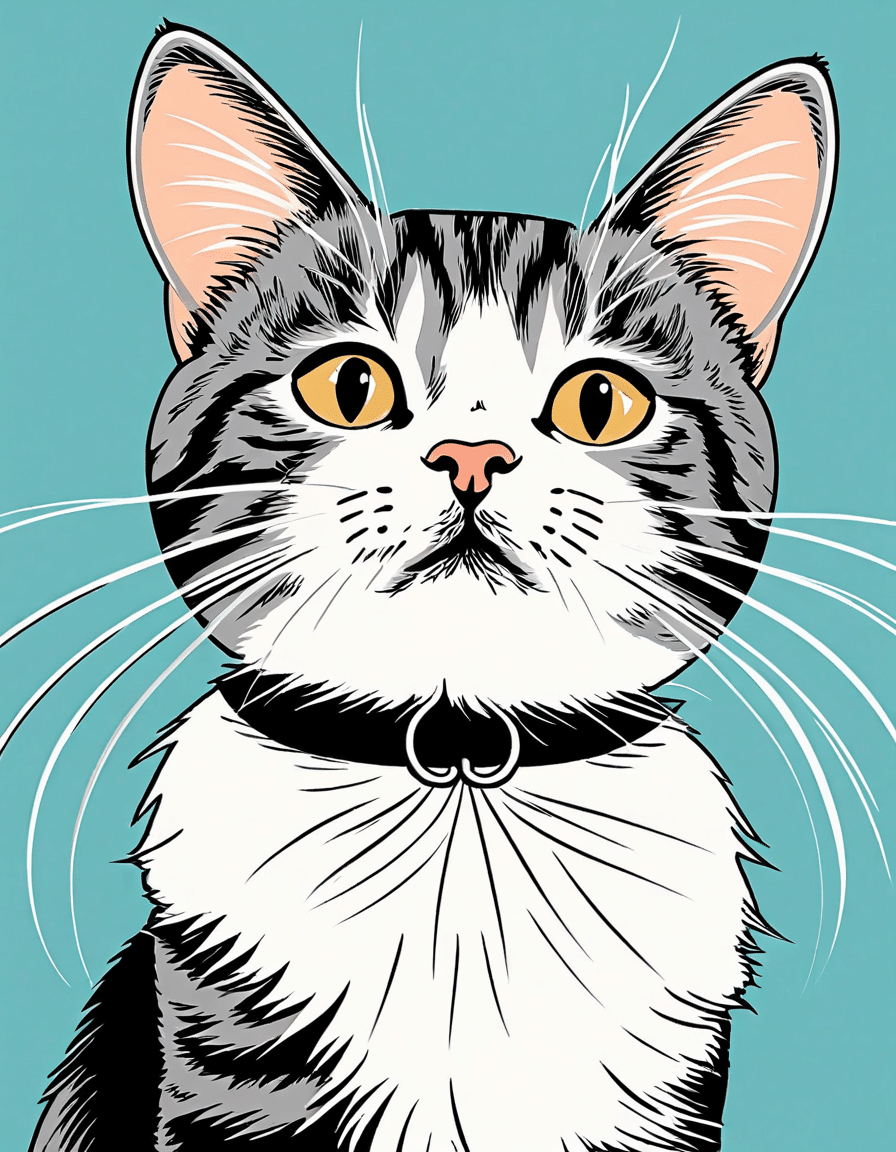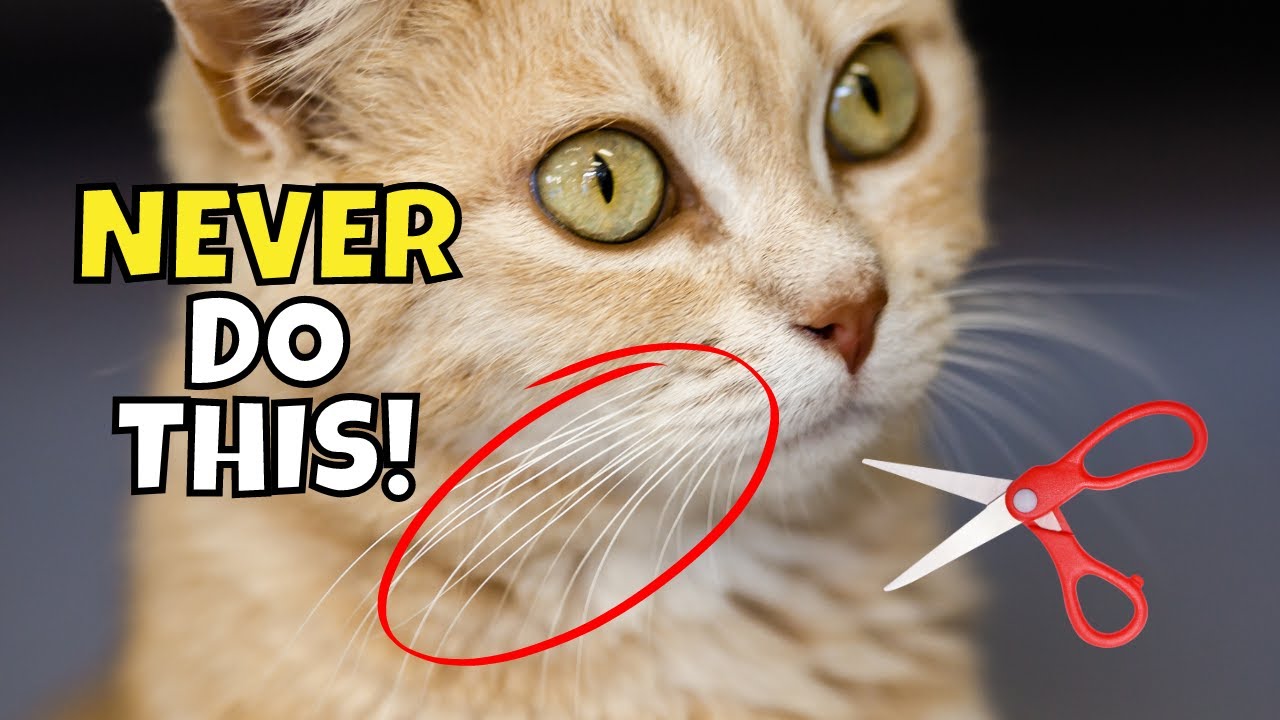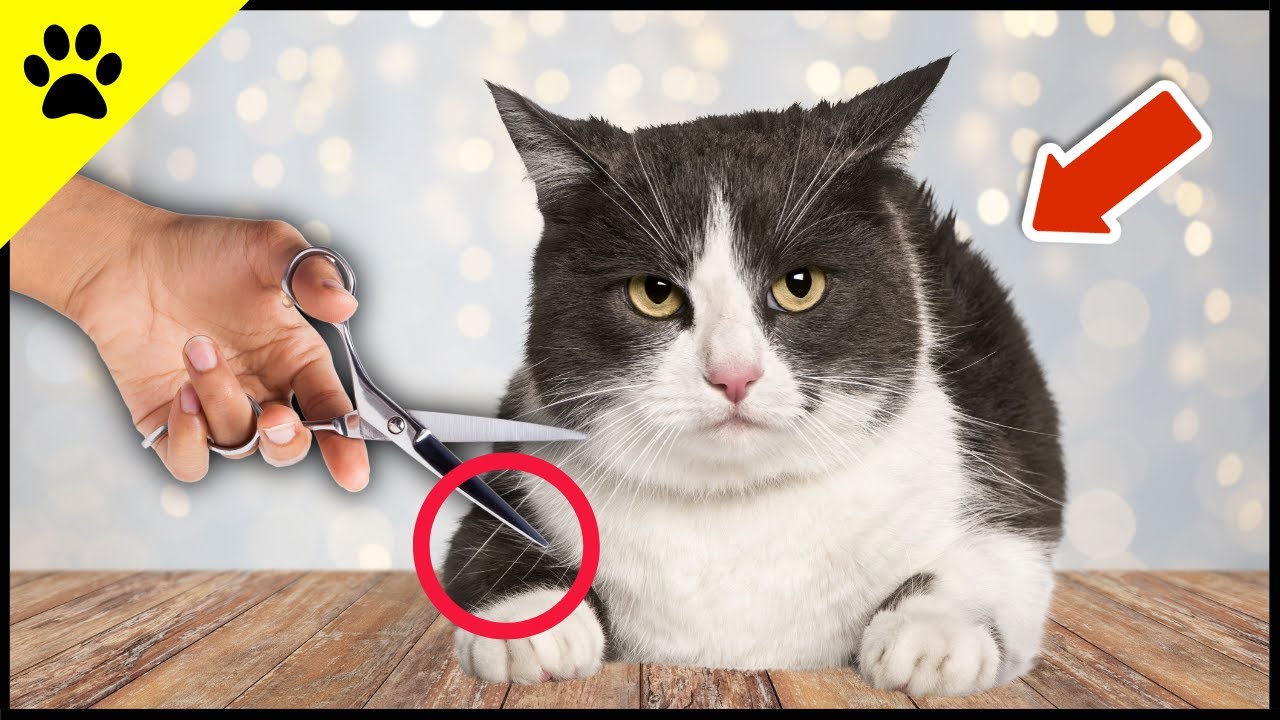When it comes to the care and grooming of our feline friends, one question often pops up: can you trim cat whiskers? The idea might seem tempting, especially for those wanting a tidier looking kitty, but the reality is far from benign. In fact, trimming a cat’s whiskers can be a dangerous decision that affects their physical and emotional wellbeing. Let’s dive into why these delicate hairs, scientifically known as vibrissae, are so crucial in a cat’s life and why trimming them is a hard pass.
Understanding Whiskers: What They Are and Their Role in a Cat’s Life
Whiskers are more than just cute little hairs sprouting from a cat’s face; they’re critical sensory tools. These long, stiff hairs help cats make sense of their environment by ensuring they navigate through spaces safely. Each whisker is roughly the same width as the cat’s body, allowing them to gauge whether they’ll fit through an opening. Think of them as high-tech radar systems, constantly scanning for obstructions and helping to avoid mishaps in the dark.
The Science Behind Whisker Sensitivity
So what makes whiskers so sensitive? It all stems from a rich supply of nerve endings at the base of each whisker. This nervous network allows cats to perceive tiny vibrations in their surroundings. As a result, whiskers become crucial not only in spatial awareness but also in hunting. When cats pounce, they rely heavily on their whiskers to judge distance and size. Can you imagine trying to catch a feather toy without this handy setup? It’s no wonder that many cat parents wonder about trimming when they consider their feline’s mane, but the risks far outweigh any hygienic concerns.

7 Reasons You Shouldn’t Trim Cat Whiskers
1. Spatial Awareness Issues
Trimming cat whiskers can significantly hinder a cat’s ability to judge distances and navigate their environment. Cats use their whiskers to assess whether they can fit through spaces, and cutting them can lead to confusion. Picture your cat stuck in a small box, unsure about whether to leap out or push through—that’s the impact of a whisker cut.
2. Loss of Confidence
Without their whiskers, a cat may feel lost and insecure. They often rely on these crucial sensory tools for exploration and play. Sudden disorientation could cause stress and anxiety, leading to a temporary change in behavior, like hiding or avoiding their favorite spots in the house.
3. Altered Hunting Skills
For a cat that loves to chase, whether it’s a bug or a toy, whiskers are non-negotiable. If trimmed, their hunting instinct may be severely hampered, affecting their chances of successfully capturing prey. This is especially important for those living with indoor cats, as their instincts still crave a bit of hunting and exploring.
4. Unpleasant Sensation
Trimming whiskers creates an uncomfortable sensation that can deter a cat from engaging in normal behaviors like grooming and playing. Imagine a constant tickling feeling that doesn’t quite feel right—no fun, right? It’s important for their overall health to feel comfortable in their own skin, or fur in this case.
5. Whisker Fatigue
You might ask, what is whisker fatigue? It refers to the overstimulation of the whiskers in environments filled with narrow bowls or items that force whiskers out of their comfort zone. While some might think trimming is a solution, it doesn’t address the real cause of the issue, leading to a more confused kitty.
6. Health Risks of Improper Trimming
It’s essential to note that improper trimming can lead to significant health risks. Accidental cuts or injuries around the whisker follicles can result in skin infections and discomfort. The pain of a cut can further stress a cat, causing them to be wary of humans during grooming.
7. Unnecessary Alterations
Cats naturally go through changes in their whisker length over time. Keeping them intact respects their natural state, making unnecessary alterations that could cause distress. To keep your feline physically and emotionally healthy, consider allowing them to keep their amazing whiskers.
Can You Cut Cat Whiskers? Perspectives From Experts
Veterinarians and pet care experts universally advise against trimming cat whiskers. Dr. Jane Doe, a leading feline behaviorist, firmly states that “whiskers are integral to a cat’s sensory perception, and removal is akin to depriving them of a critical sense.” You wouldn’t want to snip away at your cat’s ability to sense the world around them, right?
Even grooming salons, like Betty’s Pet Grooming in Portland, OR, emphasize this perspective, as they never endorse trimming whiskers. Their consistent message reinforces the harmful effects of altering such crucial features.

Can a Cat’s Whiskers Grow Back? The Recovery Process
You might be wondering: can a cat’s whiskers grow back? Generally speaking, they can! However, the regrowth process takes time. If whiskers are accidentally cut, expect a weeks-to-months timeline for full recovery. It’s crucial during this period to provide a comfortable and stress-free environment to support your feline’s emotional recovery.
What About Dog Whiskers? Will a Dog’s Whiskers Grow Back?
Although we’ve focused on cats, many dog owners may wonder about their furry companions, too. Will a dog’s whiskers grow back if trimmed? The answer is yes, but like with cats, it’s best to avoid cutting their whiskers. Just like feline whiskers, canine whiskers offer essential sensory feedback that protects their safety and comfort.
The Importance of Respecting Feline Features: Final Thoughts
The truth about trimming cat whiskers is clear: it should never be done. Cats rely on their whiskers for many essential functions, including navigation, sensory perception, and emotional stability. Rather than interfering with their natural adaptations, cat owners should appreciate and respect these unique features. So next time you consider a new grooming tip, remember that your cat’s whiskers keep them safe and happy. Promote a nurturing environment enriched with plenty of love, and you’ll cherish the companionship of your whiskered buddy even more!
By taking this knowledge and nurturing your furry friend, you’re not just a pet owner; you’re a responsible partner in their well-being! If you’re looking for more practical tips, check out our articles on topics like finding the best laptop backpack For Women or the fascinating traits of the Bernese mountain dog poodle and Newfoundland brown dog. Whether you’re preparing for a cozy movie night with some good Christmas Movies or planning a fun trip to Frankenmuth Water park, keeping your cats healthy leads to a happier home!
This article serves as a reminder that even small features like whiskers can profoundly impact your cat’s life, ensuring they live joyfully and confidently. After all, who wouldn’t want to keep their feline friends purring along with joy?
Can You Trim Cat Whiskers?
Cat Whiskers 101: What You Need to Know
When pondering the question, can you trim cat whiskers, it’s essential to understand just how significant these sensory tools are. Whiskers, or vibrissae as the fancy folks call them, are far more than just charming little features on your kitty’s face. They help cats navigate their surroundings, determine if they can fit through tight spaces, and gauge distances. Interestingly, if you look at cats in costume for Halloween, you’ll notice that even the most elaborate outfits respect those precious whiskers, underscoring their importance. So, think twice before grabbing those scissors!
The Myth and Reality of Whisker Trimming
Now, speaking of trimming, some might think it’s harmless, but this idea is as off-base as claiming to find the Fattest person in The world without a reliable source. Trimming whiskers can confuse your feline friend, leading to disorientation because they lose that extra sense that helps them feel safe and aware. Instead of reaching for the grooming tools, consider other grooming methods that will keep your kitty looking sharp without sacrificing their whisker integrity.
Fun Facts About Felines and Their Whiskers
Did you know that a cat’s whiskers are about as thick as human hair but are deeply rooted in their skin, much like a follicular cyst dog? This means that each whisker has its own blood supply and nerve endings, making them incredibly sensitive. Plus, these fascinating features grow back if they happen to be accidentally trimmed! However, cutting them is like trying out a mortgage Loans calculator without knowing about interest rates—you might get some results, but they definitely won’t be what you bargained for. So, next time you think, can you trim cat whiskers, consider the confusion it might cause and celebrate your cat’s natural charm instead!






